The biggest surprise about the German military cemetery at La Cambe is its size – it is small (16.5 acres), given that 21,222 German soldiers are buried here.
That’s much smaller than the American Cemetery at Colville (172.5 acres), which has 9,380 graves. The reason is that, not only are the graves packed closer, but each small marker set in the ground has two soldiers buried underneath.
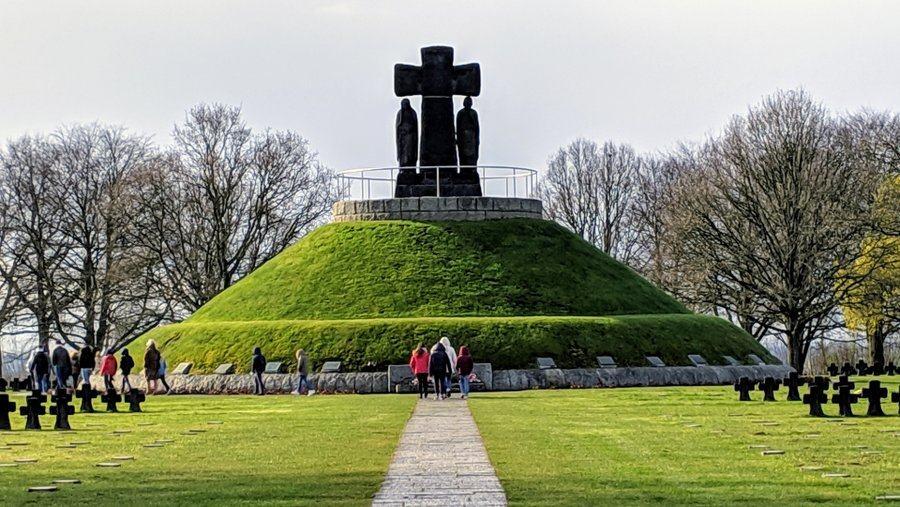
It makes a visit to the cemetery, extra intense. The soldiers buried here in such numbers ranged in age from 16 to 72, but as you read the marker stones a huge number were just eighteen and they died in those few intense weeks between 6th June and 20th August 1944.
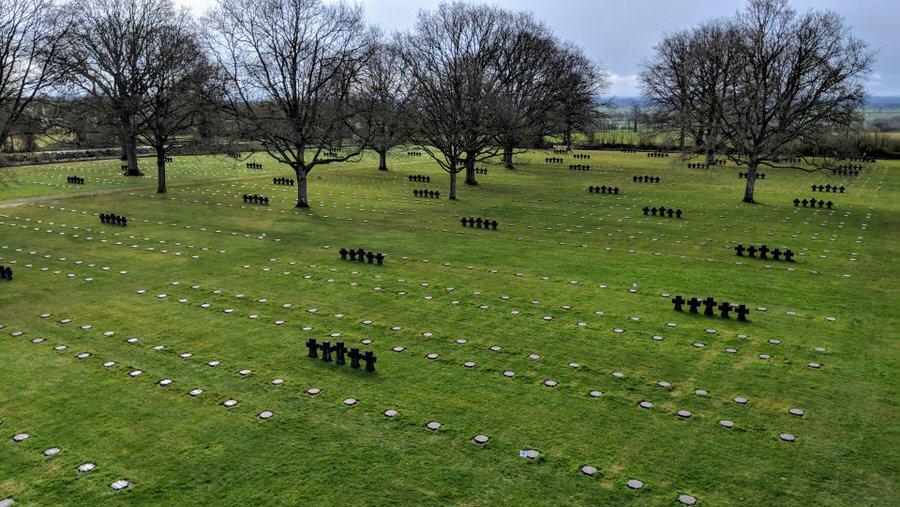
The cemetery was created by the United States Army Graves Registration Service in 1944 as a mixed cemetery site with German dead buried in one field and American dead in the next field. Once the war was over, the American dead were either repatriated or reburied at Coleville, and the La Cambe site was taken over by the German War Graves Commission (Volksbund Deutsche Kriegsgräberfürsorge), who in 1954 began to gather the remains of German soldiers from small graveyards and burial sites scattered around Normandy into six large cemeteries. La Cambe received an extra 12,000 dead.
The cemetery is unlike American and Commonwealth cemeteries. It has a brooding gothic feel to it. There are little groups of five short crosses in grey schist stone standing between the rows of graves which are marked with stone plaques in the ground. In the centre is a large memorial mound covering the mass grave of 207 unknown and 89 identified warriors.
There is a small gatehouse (with a surprisingly narrow entrance that somehow adds to the concentrated feel of the place) with memorial rooms, and a modern visitor centre outside, that has a database of the graves and information about the German War Graves Commission.
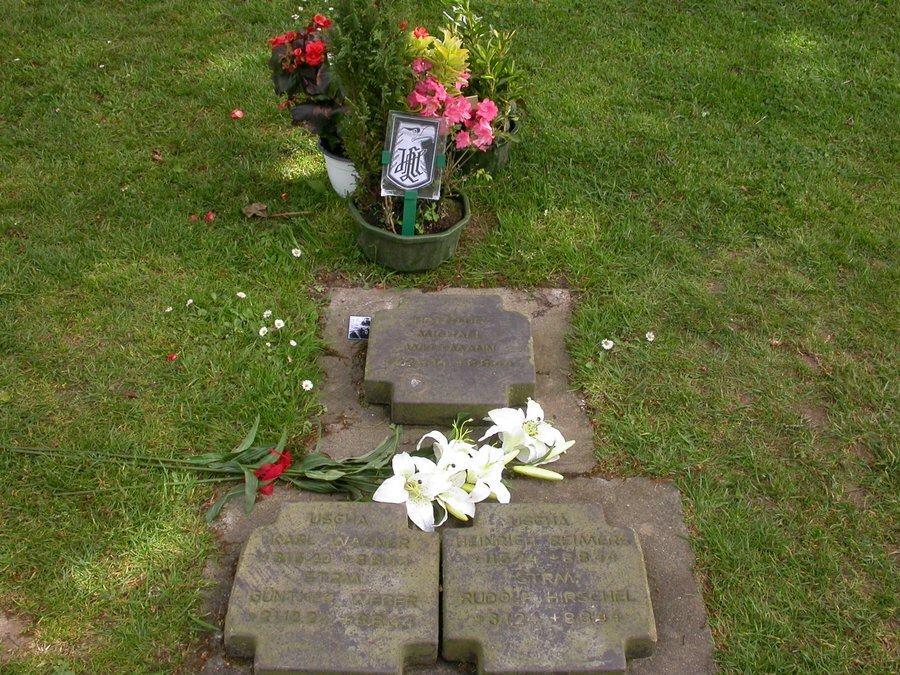
I only discovered, after my visit, that the German tank ace, Michael Wittmann, is buried here with some of his crew. I’ve changed my tune on him. There are mixed views about Wittman and drawing attention to his grave. He was an ardent Nazi and from time to time it attracts Far Right regalia. If I visit again, I might see if I can find him, but I won’t be paying any respects.
D-Day Normandy Posts
Declaration: I was on a self-driving press trip as a guest of the Normandie and Calvados tourist offices.
Factbox
Getting there:
Cimetière militaire allemand de La Cambe
Les Noires Terres
14230 La Cambe
France
The cemetery is surprisingly quiet, given that it sits right next to the N13/E46 dual-carriageway that is the main route through the Calvados region of Normandy. If you are driving east or west on the dual carriageway, take the La Cambe exit and follow signs to the cemetery.
Opening Hours:
The cemetery and visitor centre are open daily from 8.00am to 7.00pm, however the visitor centre closes for lunch (12.00 noon – 1.00pm).

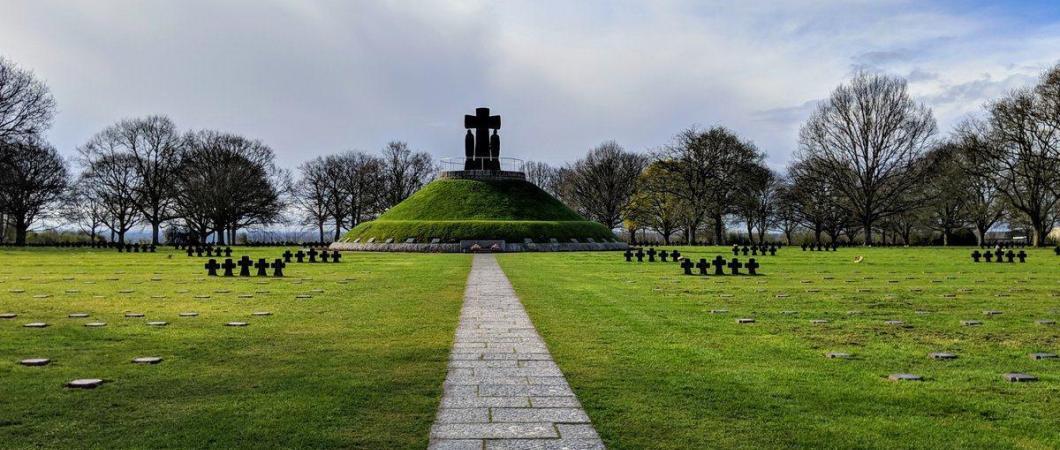
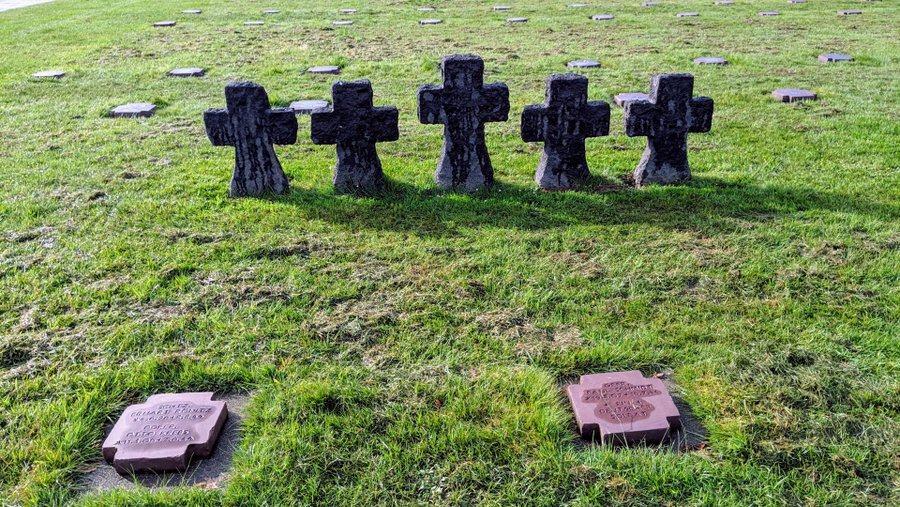



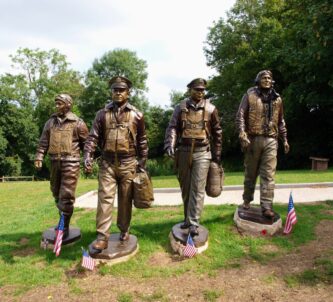
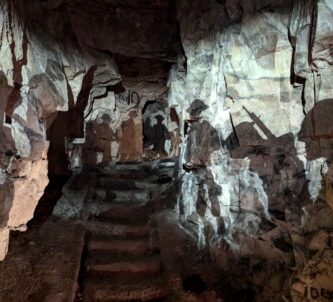


Also buried there is Adolf Diekmann who orchestrated the Oradour Sur Glane massacre. Buried with the young and innocent. How ironic.
Oh, interesting. I didn’t know that.
Why are the 5 crosses placed where they are? What do they denote?
That’s a seriously good question, and, off the top of my head, I don’t know. I’m going to see if I can find an answer.
Ok Chris, I have asked around, mostly among the usually well-informed We Have Ways Podcast ‘Independent Company’ on Patreon. Although several have visited La Cambe, there’s no definitive explanation.
Personally though, I have come to the conclusion the crosses are field dividers. Wikipedia cites a German publication (Übersichtsplan der Deutschen Kriegsgräberstätte La Cambe) saying “The tumulus is surrounded by 49 rectangular grave fields with up to 400 graves each. On the large grass areas, graves are identified by flat grave markers.” If you look at that photo taken from the top of the tumulus, it seems the crosses simply mark the divide between the grave fields/sections. So, navigational marks, I think.
is there at all some type of registry of any of the soldiers that are buried here. i am looking for a man with the name of “Elsner”. i believe that would be his last name. i have his helmet, and from what i was told by my grandparents is that it came from the battle at Normandy. thank you for your time. i am curious as to his fate.
Hi Frank, Yes, as with many cemeteries there is a local register kept on site. In this case, kept in the visitor centre. I don’t know if there is an online version.